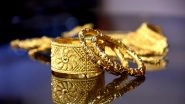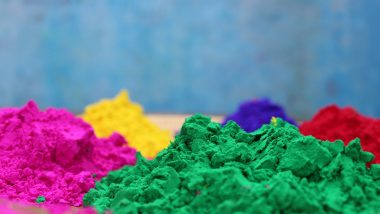Dhulandi will be celebrated on the very next day of Holika Dahan i.e. on March 29. Dhulendi is also known as Dhurkhel, Dhulivandan and Chait Badi. At present, people celebrate this festival by putting colour, abir and gulal on each other on the day of Dhulendi. But the traditional form of this festival was quite different from the present one. Dhulendi meant Dhuli Vandan. In ancient times, this festival was celebrated in a very different way. On the first day of Dhulendi, people used to soil each other and also used to play Abir. If a member died in someone's family, then people used to go to his house to colour Holi.
Is Dhulandi Different from Holi?
According to the legend, Vishnu ji did Dhuli Vandan from Tretayug since then Dhulendi began to be celebrated. Tretayug is considered to be the second era, in this era, Lord Vishnu himself took three incarnations to destroy iniquity - 1. Vamana avatar 2. Parashurama avatar and 3. Sri Rama avatar. According to mythology, in this era, Lord Vishnu had done Dhundi Vandana, which means that in that era, Vishnu had incarnated with different bright colours. Holi is also a festival of colours, so this story is also associated with the mythology of Holi.
Dhulendi is celebrated on the next day of Holika Dahan. On this day people fiercely play Holi with water and colours. Dhulendi is known by the names Dhurdi, Dhurkhel, Dhulivandan and Chait Badi. In today's time, the festival of Dhulendi is celebrated by putting colour and abir gulal on each other, but in earlier times the festival of Dhulendi was celebrated in a very different way. This day is called Dhulendi after the name of the same tradition. According to mythological beliefs, Lord Vishnu had done Dhuli Vandana at the beginning of Tretayuga. Since then, the tradition of dusting on this day has started. Due to dusting on each other, this day is called Dhulendi.
In olden times, when people used to dust on each other, it was called a dust bath. Even today, in some places, especially in villages, people apply dust to each other. In earlier times people used to apply smooth or Multani mitti on the body. Also in earlier times this day, a colour made from the juice of Tesu flowers with dust was used and Holi was played with Abir Gulal on Rangpanchami. In the present time, the form of Dhulendi has changed, people celebrate the festival with colours just like the festival of Rangpanchami on this day.
Rangwali Holi, Its Holy Rituals and Dos and Don'ts
On the first day of Dhulendi, there was a tradition of putting dry colours only in those houses where someone had died in the previous year. Even today people go to visit their homes at Dhulendi and carry out the tradition of Holi (Dhulendi) by applying the vaccine to Gulal. Holika is cooled after getting up in the morning of Dhulendi and completing the routine. That is, water is offered after worship. Dhuvilavandan means the worship of dust. Ash is also called dust. It is only after applying the ashes of Holika from the forehead that the playing of Holi is started. This is the reason why this festival is also called Dhulivandan.
The Tradition of Hugging on Dhulendi
It is said in this subject that when all efforts to kill the devotee Prahlada were fruitless, Hiranyakashyap sought help from his sister Holika. Holika had the blessing of not burning in the fire. She sat in the fire with her nephew Prahlada, but by the grace of Vishnu ji, the hair of the devotee Prahlada was not deterred and Holik was burnt in the fire. It is said that in the joy of devotee Prahlada's escape, people hugged each other and distributed sweets. Apart from this, the tradition of hugging each other gives the message of living together.
(The above story first appeared on LatestLY on Mar 24, 2021 04:00 PM IST. For more news and updates on politics, world, sports, entertainment and lifestyle, log on to our website latestly.com).













 Quickly
Quickly


